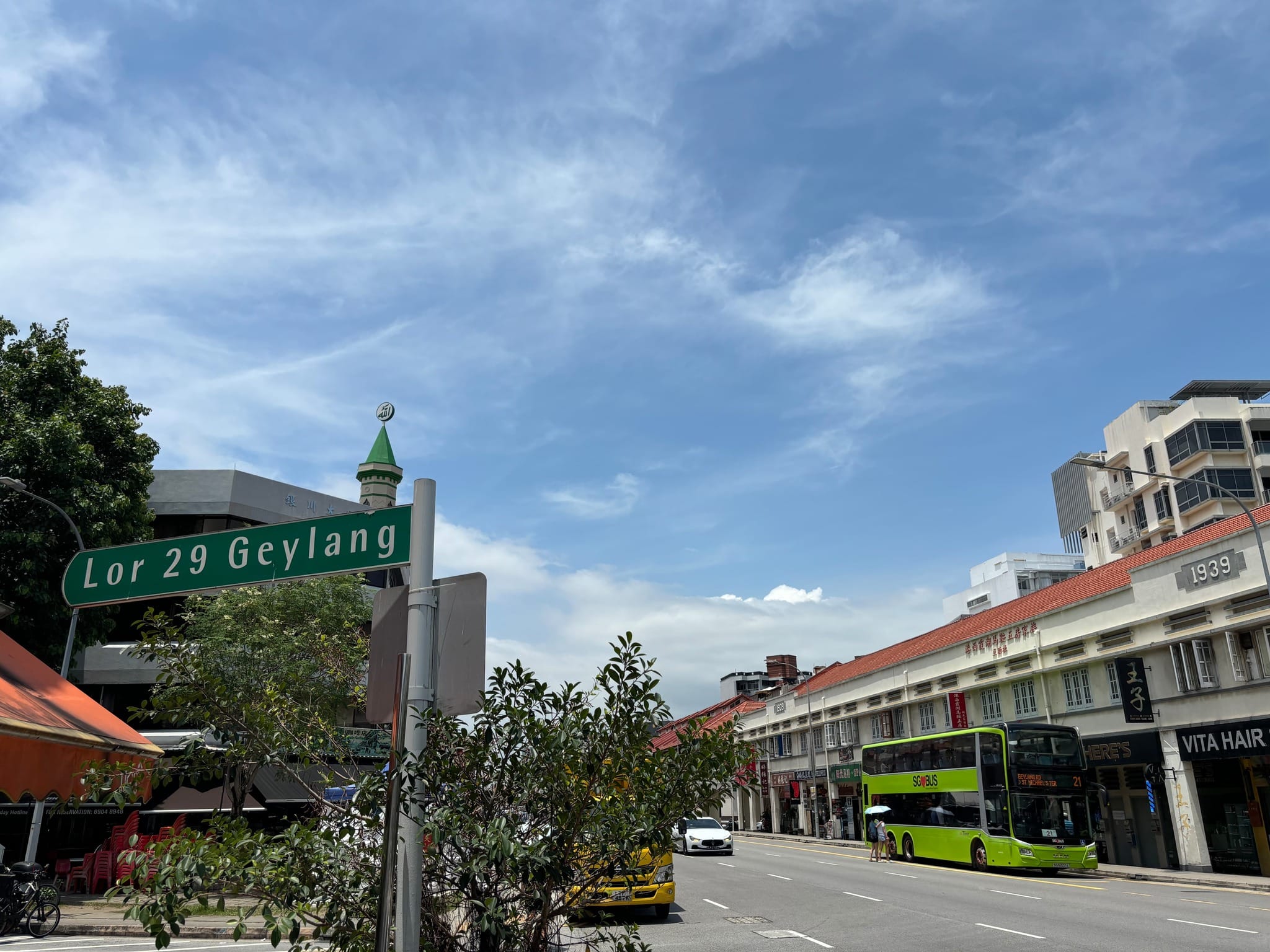This article has been migrated from an earlier version of the site and may display formatting inconsistencies.

What are some things that come to mind when you think of Geylang? Some would mention its incredible culinary scene such as the variety of restaurants that line the streets, or the troves of durians sold by the roadside. Some would even mention its red-light district and its association with a mixture of vices. However, these perceptions do not define Geylang. In reality, Geylang is a neighbourhood where history, culture, and modernity intersect in unique ways.
Geylang was found quite early in Singapore’s history. Maps dating back to 1849 depicted Geylang with a large coconut plantation adjacent to the mouth of the Kallang River. It is believed to have derived its name from the Malay word “kilang”, meaning factory. Back then, Geylang was a bustling area filled with processing plants, coconut plantations and brick kilns, reflecting the area’s industrial roots. At the turn of the 20th century, the growth of the lemongrass-related industry gave rise to the name Geylang Serai (serai means lemongrass in Malay) – one of Singapore’s oldest Malay settlements. By 1935, Geylang Serai was transitioning from its agricultural roots to an urban area, driven by an influx of residents. To accommodate the growing population, key infrastructure was developed, including the construction of new roads, the introduction of trolleybuses, and the establishment of markets.
Today, Geylang boasts a wealth of architectural heritage offering a glimpse into its past. The shophouses that line its streets are a blend of Chinese baroque and Peranakan styles, showcasing intricate facades with ornate details. Some of these shophouses have been carefully restored and adapted to modern uses, while still preserving their historical significance. Geylang is also home to several religious landmarks, like Sri Sivan Temple, Masjid Khadijah, and Geylang Evangelical Church. Geylang Serai is famous for its popular and iconic bazaars during Ramadan. Over the years, many ground-up initiatives have also sprung up in Geylang. From volunteer barbers who provide free haircuts to those in need, to groups which organise friendly volleyball games to strengthen the community spirit, Geylang is much more than its reputation suggests. The juxtaposition of these within a single neighbourhood highlights the diversity that Geylang embodies.
Geylang is a neighbourhood that defies simple categorisation. Its rich history, melting pot of cultures, and vibrance make it a place worth exploring and appreciating beyond the stereotypes. Whether you’re there for the food, the heritage, or the architecture, Geylang offers a unique slice of Singaporean life that is both authentic and unforgettable.
In the years ahead, we can expect to see a redevelopment of Geylang, having surfaced in Singapore’s urban planning discussions. For instance, there are ongoing efforts to rejuvenate the Geylang Serai cultural belt with new public spaces, improved infrastructure, and enhanced programmes to facilitate community bonding. Despite these changes, we should keep a conscious effort to retain the area’s unique character and heritage, ensuring that Geylang’s spirit is not lost in the process of urban renewal.
